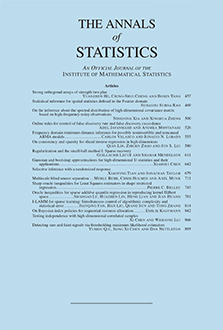Abstract
Normal mixture distributions are arguably the most important mixture models, and also the most technically challenging. The likelihood function of the normal mixture model is unbounded based on a set of random samples, unless an artificial bound is placed on its component variance parameter. Moreover, the model is not strongly identifiable so it is hard to differentiate between over dispersion caused by the presence of a mixture and that caused by a large variance, and it has infinite Fisher information with respect to mixing proportions. There has been extensive research on finite normal mixture models, but much of it addresses merely consistency of the point estimation or useful practical procedures, and many results require undesirable restrictions on the parameter space. We show that an EM-test for homogeneity is effective at overcoming many challenges in the context of finite normal mixtures. We find that the limiting distribution of the EM-test is a simple function of the 0.5χ02+0.5χ12 and χ12 distributions when the mixing variances are equal but unknown and the χ22 when variances are unequal and unknown. Simulations show that the limiting distributions approximate the finite sample distribution satisfactorily. Two genetic examples are used to illustrate the application of the EM-test.
Citation
Jiahua Chen. Pengfei Li. "Hypothesis test for normal mixture models: The EM approach." Ann. Statist. 37 (5A) 2523 - 2542, October 2009. https://doi.org/10.1214/08-AOS651
Information





